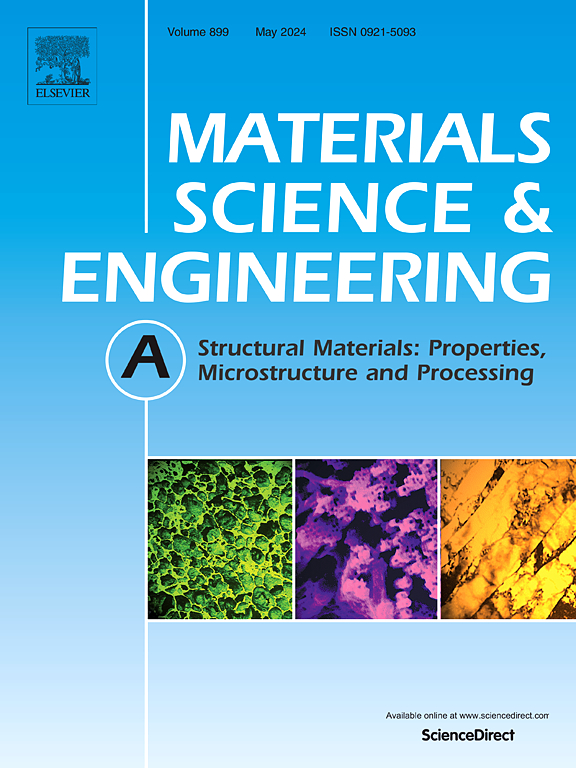Microstructure and mechanical properties of TiC-modified Al-Zn-Mg-Cu aluminum alloys fabricated by laser powder bed fusion
IF 7
2区 材料科学
Q1 MATERIALS SCIENCE, MULTIDISCIPLINARY
引用次数: 0
Abstract
Promoting columnar-to-equiaxed transition (CET) of grain structures is a critical strategy for enhancing the printability and mechanical properties of high-strength aluminum alloys fabricated by laser powder bed fusion (LPBF). One effective method to achieve CET is by enhancing the heterogeneous nucleation of α-Al through the use of in-situ L12-Al3Ti nucleants. Herein, TiC nanoparticles, which are stable at room temperature, are proposed as a safer and more economical alternative to traditional Ti or TiH2 particles for triggering the formation of in-situ L12-Al3Ti nucleants. The effects of TiC content on the microstructure and tensile properties of LPBF-processed Al-Zn-Mg-Cu aluminum alloys were systematically investigated. The results reveal that TiC nanoparticles effectively induce the formation of potent L12-Al3Ti nucleants and prevent grain growth, facilitating CET, grain refinement, and suppressing cracking without requiring extensive modifications to LPBF processing parameters. The resulting alloys exhibit crack-free, dense, equiaxed, and fine-grained microstructures. The density of the as-built alloys reaches 99.2 %, and the average grain area decreases from 348.3 μm2 to 1.7 μm2 as the TiC content increases from 0 to 5 wt%. Following conventional T6 heat treatment, the tensile strengths of the LPBF-processed Al-Zn-Mg-Cu aluminum alloys modified with 2.5 wt% TiC are comparable to those of wrought Al-Zn-Mg-Cu aluminum alloys, achieving an ultimate tensile strength (UTS) of 609 MPa, a yield strength (YS) of 537 MPa, and an elongation (El) of 8.3 %, respectively. These findings highlight the potential of TiC nanoparticles as an effective agent for tailoring the microstructure and enhancing the mechanical properties of additively manufactured high-strength aluminum alloys.
激光粉末床熔合tic改性Al-Zn-Mg-Cu铝合金的组织与力学性能
促进晶粒结构柱向等轴转变(CET)是提高激光粉末床熔合高强铝合金可打印性和力学性能的关键策略。通过原位L12-Al3Ti成核剂增强α-Al的非均相成核是实现CET的一种有效方法。本文提出了在室温下稳定的TiC纳米颗粒作为一种更安全、更经济的替代传统Ti或TiH2颗粒来触发原位L12-Al3Ti成核剂的形成。系统研究了TiC含量对lpbf加工Al-Zn-Mg-Cu铝合金组织和拉伸性能的影响。结果表明,TiC纳米颗粒可以有效地诱导强力L12-Al3Ti成核剂的形成,并在不需要大量修改LPBF工艺参数的情况下阻止晶粒长大、促进CET、晶粒细化和抑制裂纹。所得合金表现出无裂纹、致密、等轴和细晶粒的显微组织。当TiC含量从0 wt%增加到5 wt%时,合金密度达到99.2%,平均晶粒面积从348.3 μm2减小到1.7 μm2。经常规T6热处理后,经2.5 wt% TiC改性的lpbf处理的Al-Zn-Mg-Cu铝合金的抗拉强度与变形后的Al-Zn-Mg-Cu铝合金相当,其极限抗拉强度(UTS)为609 MPa,屈服强度(YS)为537 MPa,伸长率(El)为8.3%。这些发现突出了TiC纳米颗粒作为增材制造高强度铝合金的有效剂的潜力,可以调整其微观结构并提高其力学性能。
本文章由计算机程序翻译,如有差异,请以英文原文为准。
求助全文
约1分钟内获得全文
求助全文
来源期刊

Materials Science and Engineering: A
工程技术-材料科学:综合
CiteScore
11.50
自引率
15.60%
发文量
1811
审稿时长
31 days
期刊介绍:
Materials Science and Engineering A provides an international medium for the publication of theoretical and experimental studies related to the load-bearing capacity of materials as influenced by their basic properties, processing history, microstructure and operating environment. Appropriate submissions to Materials Science and Engineering A should include scientific and/or engineering factors which affect the microstructure - strength relationships of materials and report the changes to mechanical behavior.
 求助内容:
求助内容: 应助结果提醒方式:
应助结果提醒方式:


